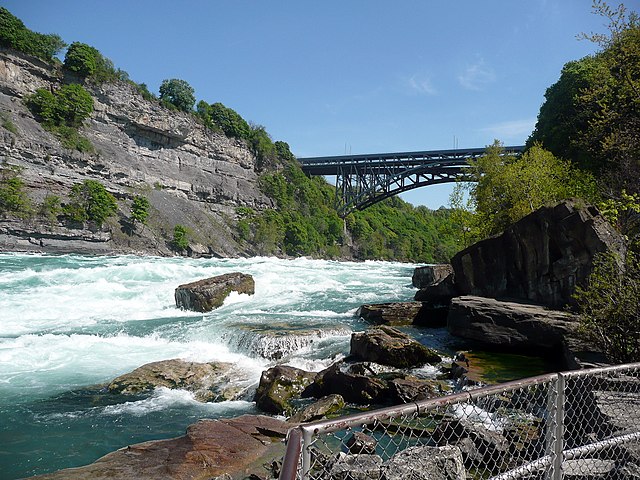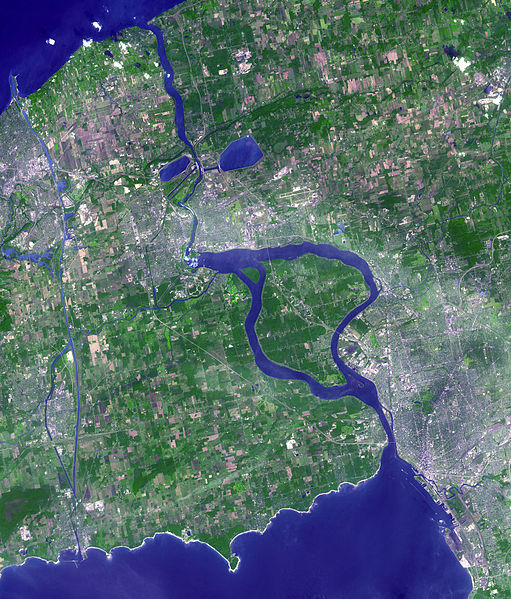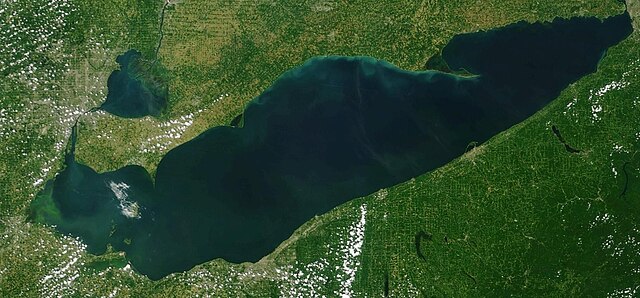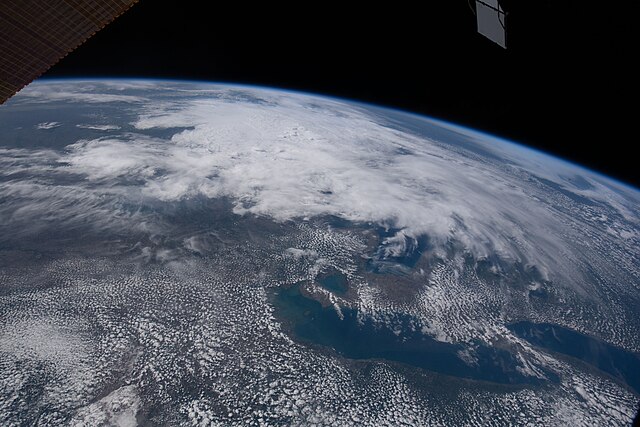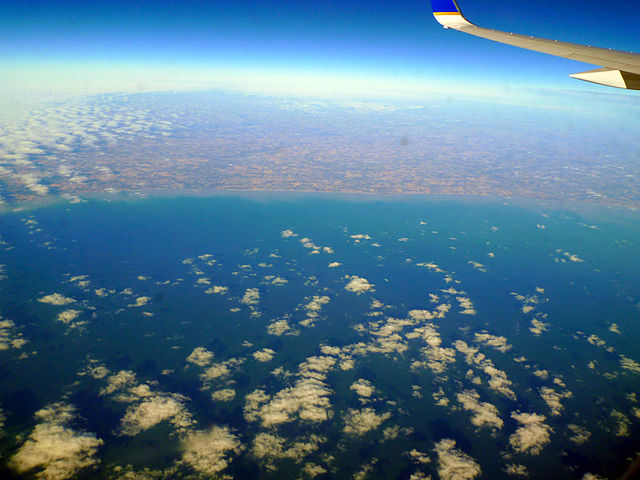The Niagara River flows north from Lake Erie to Lake Ontario, forming part of the border between Ontario, Canada, to the west, and New York, United States, to the east. The origin of the river's name is debated. Iroquoian scholar Bruce Trigger suggests it is derived from a branch of the local Neutral Confederacy, referred to as the Niagagarega people on several late-17th-century French maps. George R. Stewart posits that it comes from an Iroquois town named Ongniaahra, meaning "point of land cut in two."
The Niagara River at Niagara Gorge in May 2008
Satellite image of Niagara River flowing north from Lake Erie (bottom) to Lake Ontario (top). The river flows around Grand Island, and then flows over Niagara Falls. It narrows in the Niagara Gorge, where two hydropower reservoirs are visible, and then widens after exiting the gorge. The Welland Canal is visible on the far left.
American Falls with Goat Island to its right
Niagara River at Queenston, Ontario, then known as Queenstown, Upper Canada, c. 1805 watercolour
Lake Erie is the fourth-largest lake by surface area of the five Great Lakes in North America and the eleventh-largest globally. It is the southernmost, shallowest, and smallest by volume of the Great Lakes and also has the shortest average water residence time. At its deepest point Lake Erie is 210 feet (64 m) deep, making it the only Great Lake whose deepest point is above sea level.
NOAA satellite image of Lake Erie from July 7, 2023. Light green swirls are algae bloom on the western edge of the lake.
Lake Erie on May 28, 2022, taken from the International Space Station
North shore in mid-December 2014
Walk in Water, built in Buffalo, was the first steamship on Lake Erie. Picture c. 1816.

